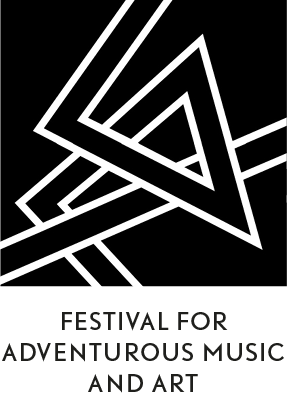Calendar

Technosphärenklänge #3 – Concerts
Haus der Kulturen der Welt , John-Foster-Dulles-Allee 10, 10557 Berlin → MapTickets: 22/18 € reduced
12
FriThe third edition of the Technosphärenklänge series, produced by the HKW in collaboration with CTM Festival, will present musical projects operating at the border of art and science. Three projects – the world’s first neural synthesizer that performs with human musicians; water droplets levitated and shaped by sound waves; and the interconnection of spatial sound and high-energy lasers – make current notions of materiality tangible and fundamentally re-think the relationship between nature, technology and human consciousness. All three projects require intensive research and constant collaboration between the artists, natural scientists and technologists. The following day, lectures and talks hosted together with Art Laboratory Berlin will explain the research and science behind the performances, and discuss the works’ social implications.
Each work explores the peculiarities of volatile, changeable and living matter by rendering it into co-constitutive components of artistic practice and performance. Aside from the ephemeral nature of sound itself, these components encompass materials, energy states, or specific properties that can only be addressed and perceived with complex technical equipment.
"cellF" by Guy Ben-Ary and collaborators (with media artist Nathan Thompson, electric engineer Dr. Andrew Fitch, musician Darren Moore, stem-cell researcher Dr. Michael Edel, neuro-scientist Dr. Stuart Hodgetts, and neuro-engineer Dr. Douglas Bakkum) represents a radical new way to think about what a musical instrument can be and how music can be made. With cellF, human neurons grown in a Petri dish form the living “brain” of an analogue electronic synthesizer. Using these neural networks, cellF controls in real time its "body", that is made of an array of analogue modular synthesizers, forming an autonomous wet-analogue cybernetic musician capable of entering into musical dialogue with human musicians: guitarist Schneider TM (on 12 May) and vocalist Stine Janvin (on 13 May). The human-made music is fed into cellF’s neural networks as electrical stimulation. The network’s reactions to the artists’ impulses resonate through its modular synth body, creating reflexive and improvised post-human pieces of music resulting from the communication between human and non-human musicians.
In Evelina Domnitch and Dmitry Gelfand’s "Force Field", acoustically levitated water droplets resonate, vaporise and reassemble into spheroids, toroids and oscillating polygons while spinning nearly devoid of shear. As the droplets are transformed into different geometries, they reveal the three-dimensional shape of sound and point the observer to the rotational dynamics of celestial and subatomic bodies. The vibrations of the drops are simultaneously reverse-translated into sound, so that the elusive physicality of the water shapes becomes audible.
Robert Henke’s spectacular "Lumiere III" performance combines multichannel sound with highly energetic laser projections to create an immersive environment that puts human perception and multimodal sensory processing to the test. Light and music, optical and psychoacoustic effects, become mutually interrelated. Extreme contrasts between light and dark produce overlapping afterimages and negatives that appear blacker than black, modulating our perception of spatiality when experienced in combination with fog. Paradoxically, the previously unknown materiality of the laser light intensifies the impression of being amidst an immaterial calculating data sphere, otherwise invoked by the immersive spatiality of sound and light, the vocabulary of the visual forms, and their extreme synchronicity with the music. The phenomenological spectacle that is “Lumiere III” thus also hints at the often-neglected material foundations of information processing.
Intertwining natural phenomena with the human ability to create abstraction and construction, the above projects exemplify the continuous interaction between nature, technology and human consciousness, which determine the increasingly complex constellations of our reality.
Such hybrid artistic test arrangements are in resonance with the “materialistic turn” in theoretical discourse, that shows renewed alertness to the material aspects of reality. This new materiality is also at the core of the HKW’s multi-year research project, Technosphere, to which the Technosphärenklänge concert series is associated. Technology increasingly allows us to address and control nature’s autonomous processes. At the same time, ever more pervasive and intelligent technology is naturalised to appear as a quasi-autonomous global force. It is within these poles that the Technosphere project examines how human artefacts and non-human ecologies combine to compose the global Technosphere, as the new environment in which we breathe and act. Through a variety of events, the Technosphere project discusses the origins, challenges and potentials of this new earth system, while Technosphärenklänge listens to its sounds.
Partners
Clot | Groove | Crack | CDM – Create Digital Music | Art Laboratory Berlin | ENCAC – European Network for Contemporary Audiovisual Creation
Funded by
The Federal Government Commissioner for Culture and Media | Federal Foreign Office | Creative Europe Programme of the European Union
Supported by
Laseranimation Sollinger | Max Delbrück Center for Molecular Medicine

